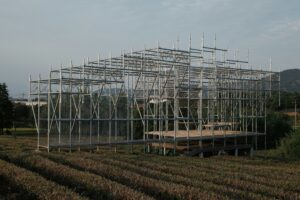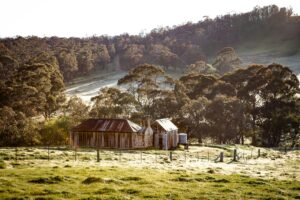Finding the Right Land for Self-Sufficient Living
When it comes to living off the grid or creating a self-sufficient lifestyle, choosing the right land is one of the most important decisions you’ll make. The land you select will shape your farming, energy, and overall living conditions for years to come. From growing your own food to establishing your own power systems, the terrain and environment are fundamental in helping you achieve self-sufficiency. This guide will explore key factors that will help you select the best land for your needs. Whether you’re looking for rural property in Australia, off-grid land, or the best land for farming, this page provides insights into locations, land suitability, aspect, soil types, and climate, which all play a crucial role in ensuring long-term sustainability.
Locations
Choosing the right location is critical for your self-sufficient lifestyle. The location of your land directly affects what you can grow, the resources available to you, and the logistical aspects of your living situation. Different regions have distinct benefits and challenges, so it’s important to consider various factors when deciding on a location.
If you plan to grow crops, consider a location with fertile soil, reliable rainfall, and access to resources like water. If you’re raising livestock, proximity to veterinary services or markets may also be important. Additionally, the location of your property will impact your access to nearby services, including schools, healthcare, and shops, which could be essential for maintaining a balanced lifestyle. Whether you are drawn to the coastal regions of Australia or the more temperate inland areas, each location has unique advantages to offer based on your self-sufficiency goals.
You’ll also want to take into account things like the availability of local building materials and the presence of a supportive community, which can make a big difference when living off the grid. Consider the location’s distance to larger towns or cities—while rural living can offer peace and privacy, being too isolated may limit your access to essential resources.
Find out more about choosing the right location for your self-sufficient land here.
Suitability
Once you’ve decided on a general location, the next step is evaluating whether the land is suitable for your needs. Suitability encompasses various factors, such as the land’s size, shape, accessibility, and the condition of any existing infrastructure.
A key part of land suitability is deciding how the property will meet your specific plans. Do you want to start a small homestead, raise animals, or run a farm? Are you looking for a place that can support a large vegetable garden or an orchard? Suitability also involves considering the proximity to essential services—especially if you’re off-grid. While some self-sufficient living enthusiasts enjoy the total isolation of a remote location, others may prefer to live near a town for easier access to healthcare, schools, and social activities.
The topography of the land—its elevation, slope, and accessibility—also plays a crucial role. A flat plot of land may be easier to work with, while sloped terrain can have advantages like better drainage. Ensuring that the land’s layout aligns with your lifestyle and needs will allow you to create a functional, comfortable living environment.
Aspect
The aspect of your land, which refers to the direction your land faces in relation to the sun, has a significant impact on the success of your farming and living conditions. The aspect can influence the temperature, wind exposure, and sunlight your property receives, all of which can affect crop growth and energy efficiency.
In the Southern Hemisphere, such as in Australia, a north-facing aspect will receive the most sunlight throughout the day, making it ideal for growing sun-loving crops. A south-facing slope, on the other hand, may receive less direct sunlight and could be cooler and wetter, affecting the types of crops that thrive there. Similarly, the aspect can impact the design of your home or shelter, as it influences natural heating and cooling patterns, reducing the need for additional energy sources.
The landscape and weather conditions in relation to aspect also play a role. For example, valleys or areas shielded from the wind might offer more protection for livestock or crops. Understanding how aspect affects your environment is key to developing an energy-efficient, productive self-sufficient property.
Soil Types
The type of soil on your land plays a fundamental role in its agricultural potential. Good soil is necessary for growing healthy crops and sustaining livestock. Different soils have varying levels of fertility, drainage, and texture, and each is better suited to different types of farming.
For instance, loamy soils are often considered the best for farming because they balance drainage with moisture retention. Clay soils, while nutrient-rich, can be heavy and prone to waterlogging. Sandy soils drain well but may require regular amendments to retain enough moisture for plants. Knowing the soil type on your property will help you determine what crops will thrive, what amendments might be needed, and whether the land is suitable for livestock.
Soil testing is an important step in evaluating land suitability. By testing the pH and nutrient content of the soil, you can plan accordingly and decide whether the land needs any improvement for optimal productivity.
Climates
Understanding the climate of your chosen land is crucial when planning a self-sufficient lifestyle. Different climates determine the types of crops you can grow, the types of animals that thrive, and even the style of housing that will work best for your needs. In Australia, there is a wide range of climates, from the tropical climates in the north to the temperate and arid climates in the south and west.
In warmer climates, you might consider crops that are heat-tolerant, such as certain fruits and vegetables, while cooler climates might be better suited to root vegetables or dairy farming. Similarly, the types of animals that can be raised on the land are impacted by the climate. Some animals are better adapted to colder environments, while others thrive in heat.
Choosing the right climate for your lifestyle, farming ambitions, and needs is key to successful self-sufficiency. Whether you’re seeking a mild climate or willing to manage the challenges of harsher conditions, it’s important to understand what your climate offers before making a decision.
Farm Finder
Not sure where to start your search for the perfect plot of land? Try our AI powered Farm Finder tool below. All you need to do is put in a couple of details about your farming aspirations, budget and desired location and we’ll give you recommendations for where you should consider looking! Try it out.





